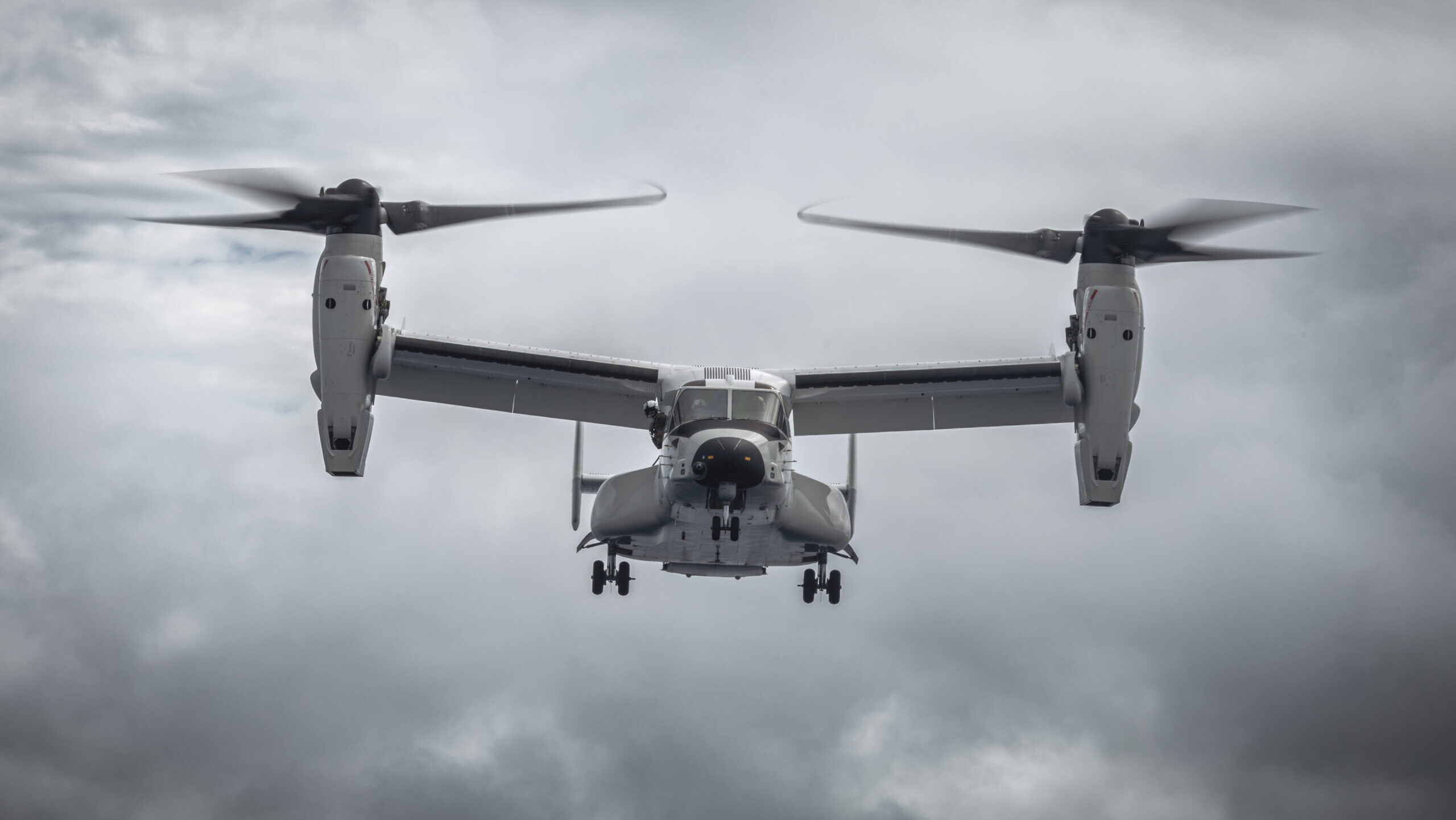Why Adding the Osprey to the Atlantic Naval Air Force Matters
Last month, I had the chance to visit Norfolk Naval Station to meet with Rear Adm. Doug “V8” Verissimo and discuss with him how the first squadron of CMV-22Bs stationed at Norfolk plays into the evolution of Atlantic fleet, which now includes the Ford carrier.
Both the CMV-22B and the USS Gerald R. Ford bring new capabilities to naval operations in the Atlantic region, which means a new challenge for Verissimo’s Naval Air Force Atlantic, the aviation Type Commander for the United States Naval aviation units operating primarily in the Atlantic under United States Fleet Forces Command. AIRLANT is responsible for the material readiness, administration, training, and inspection of units/squadrons under their command, and for providing operationally ready air squadrons and aircraft carriers to the fleet.
At the time of our discussion, six CMV-22Bs had arrived; the expectation, dependent on final funding, is for 12-15 Ospreys for the squadron to be stationed as part of AIRLANT. One top-level takeaway is how the CMV-22B provides significant help with the challenge of contested logistics — a challenge that is only going to get worse with the Navy focused on distributed operations. Being able to hop from carrier to carrier will be key for the Navy under this concept.
Take weapons transport, for example. The admiral underscored that “the future will likely bring smaller, more agile weapons to complement the heavier more difficult weapons to transport like TLAMs.” He then argued that this shift to a different weapons stockpile would augment the utility of the CMV-22B supporting weapons re-supply in a contested combat environment.
But Verissimo also noted that the CMV-22B is also going to be a vital capability for his command in an area that is logistics-related: a medical emergency. He put it this way: “If I have a medical emergency, I’m not trapping and catapulting the human body that’s already injured. I can softly land and softly take off so I can take care of my people in a medical emergency.”
There are specific benefits when the CMV-22B is combined with the Ford. The island on the Ford has been moved towards the end of the deck, freeing up space to which an Osprey can move when it lands for offloading of weapons or supplies, so it doesn’t block the EMALS catapults — meaning a resupply can happen even as combat aircraft are being deployed. And there is a fuel capability in that area which can refuel the Osprey for its departure from the deck as well.
Throughout much of our discussion, the admiral emphasized the evolution of the carrier for the new strategic situation and the flexibility it brings to the fight. The assets assigned to the Ford carrier will change as future payloads and platforms emerge.
Verissimo also underscored the unique features of the Ford design, notably the significant enhanced power generation capabilities which enable the ability to use future payloads, weapons and platforms which leverage that enhanced electrical power generation capacity.
He argued: “The carrier and the carrier strike group are one of the only integrated forces which brings the core seven joint warfighting functions to the fight wherever it is operating. And with the Ford class, and its ability to generate electric power, it enhances those capabilities as well.”
Prior to my meeting with the admiral, I met with Commander Mason Fox and his team. Fox is the Commander of Fleet Logistics Multi-Mission Squadron (VRM) 40, the “Mighty Bison,” and I learned a quite interesting aspect of the challenge of standing up the first operational CMV-22B squadron on the East Coast.
As they were getting ready to go from North Island (San Diego) to Norfolk on Dec. 6, 2023 with their first Ospreys, the DoD grounded the Osprey fleet DoD wide. Obviously, this was a shock but one which the squadron and its support community found a way to respond.
According to Fox, the squadron had received their flight simulators so the pilots could train in the absence of flying real airplanes while waiting for the grounding to be lifted. And he indicated that the maintainers worked with prime manufacturer Bell in Fort Worth on training the maintainers. This meant that when the grounding was lifted in March 2024, the squadron was ready to re-commence their stand-up effort and the first squadron planes arrived the next month.
“We want to integrate as tightly as we can with the carriers and the air wings on the East Coast so that they fully understand our capabilities,” Fox added. They work with the Commander Air Group or CAG when onboard the carrier.
What they have been focused on since the squadron has been activated is working with the carrier community on the logistics operations for East Coast based carriers, the Truman and the Ford. They worked with the Truman in June 2024 and the Ford in September 2024. They are planning to next continue their training with the Bush in the future.
Fox concluded: “Our version of the Osprey has a little bit more gas that we can carry, and we have a primary mission that is different than the Marine Corps and Air Force Ospreys. But I think that if we’re looking at a joint fight, we’re looking at the 450 plus Ospreys that are part of the program record. They will all be contributing to distributed maritime ops, because that’s the fight we are in.”
This article was published by Breaking Defense on December 2, 2024.
Featured photo: A CMV-22B Osprey, assigned to the “Mighty Bison” of Fleet Logistics Multi-Mission Squadron (VRM) 40, approaches the flight deck of the world’s largest aircraft carrier, USS Gerald R. Ford (CVN 78), Sept. 19, 2024. (US Navy photo by Mass Communication Specialist 2nd Class Maxwell Orlosky)

